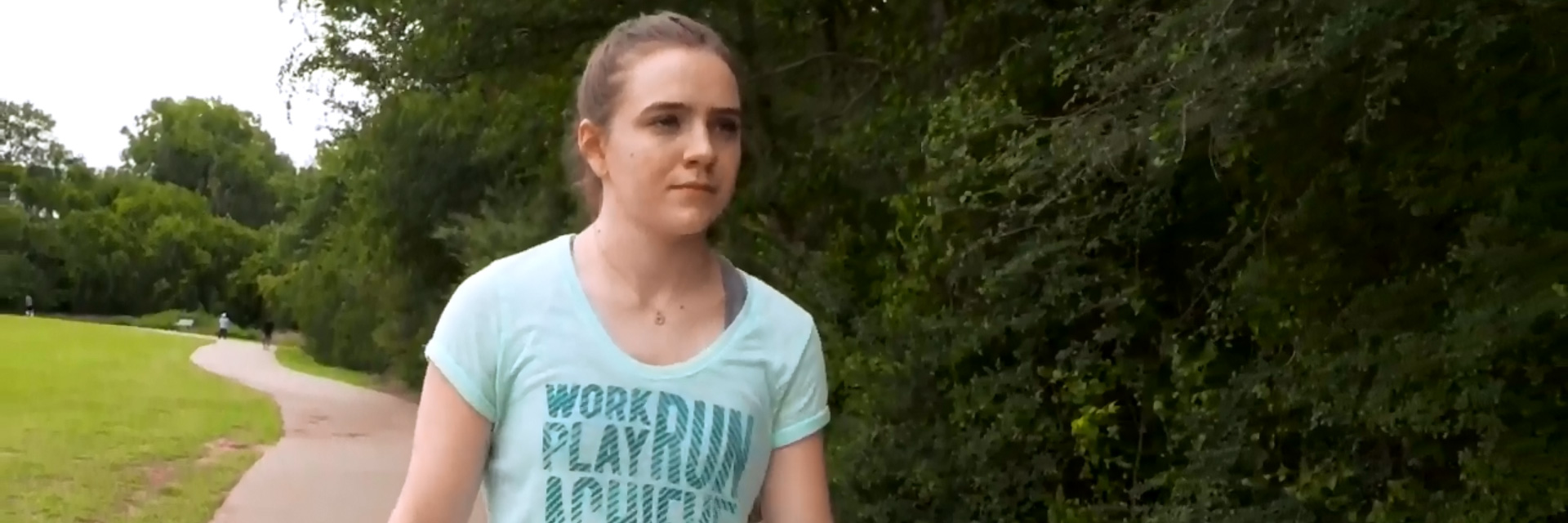Claire McKibben, an 18-year-old from Arlington, has big dreams and aspirations for her future. But one thing this lifelong soccer player never expected was a future without sports or physical activity. That nightmare threatened to become a reality as her team squared off against another in a pre-season soccer game. While playing defense, Claire went for a steal — and ended up with an injury.
“My legs got tangled up in the girl that was next to me. I turned to go get the ball and my leg didn’t. It popped, and then I fell,” Claire recalls.
Having fallen many, many times over her career, it was apparent that this time was different, recalls Claire’s mom, Lisa McKibben. “She always bounced right back up when she went down. It was never an issue. So that time when she didn’t bounce back up, we were all like, ‘Oh no.’”
Patient Testimonial, Sideline Orthopedics & Sports
Although sustaining the injury was unexpected, the path toward wellness seemed clear: Coaches, athletic trainers and fellow parents all recommended that Claire see Lindsey Dietrich, M.D., an orthopedic surgeon and sports medicine specialist at Sideline Orthopedics and Sports, a Texas Health Physician Group practice in Arlington. Dietrich has deep experience in orthopedic injuries and works with everyone from weekend warriors to elite athletes.
An MRI confirmed Dietrich’s diagnosis of Claire’s injury: an ACL tear.
The “ACL,” or anterior cruciate ligaments, help keep the bones that form your knee joint together and stable. Athletes who participate in sports like football, basketball and soccer — demanding sports that require a lot of fast turns — are more likely to injure these ligaments, and experience debilitating injury.
“What an ACL tear meant for Claire was that she would likely have some instability in the knee, and wouldn’t be able to return to her active lifestyle and to sports,” Dietrich explained.
Fortunately, Dietrich is skilled in minimally invasive treatment for ACL tears. A reconstruction was determined to be the best game plan.
“We built a new ACL out of her own tissue,” Dietrich explained. “We chose the hamstring. So we took part of her hamstring tendon and — during one procedure — we rebuilt a new ligament.”
Using small cameras and instruments, the new ligament was placed into Claire’s knee arthroscopically, meaning smaller incisions and minimal disturbance of the tissues surrounding Claire’s knee. This minimally invasive approach allows Dietrich to recommend a return to therapeutic activity to patients sooner than traditional surgery.
“We can start rehabilitating them very early — within ideally, three days post-surgery,” Dietrich said.
Three months after surgery, Claire is running and jumping, and even beginning to play her beloved sport again.
“All these little things I never thought I would miss — until I couldn’t do them,” Claire said. “Experiencing what it was like to not be able to walk, and now being back to almost normal, is amazing. I feel great.”
Find a sports medicine physician who can assist with your sports-related injuries.

